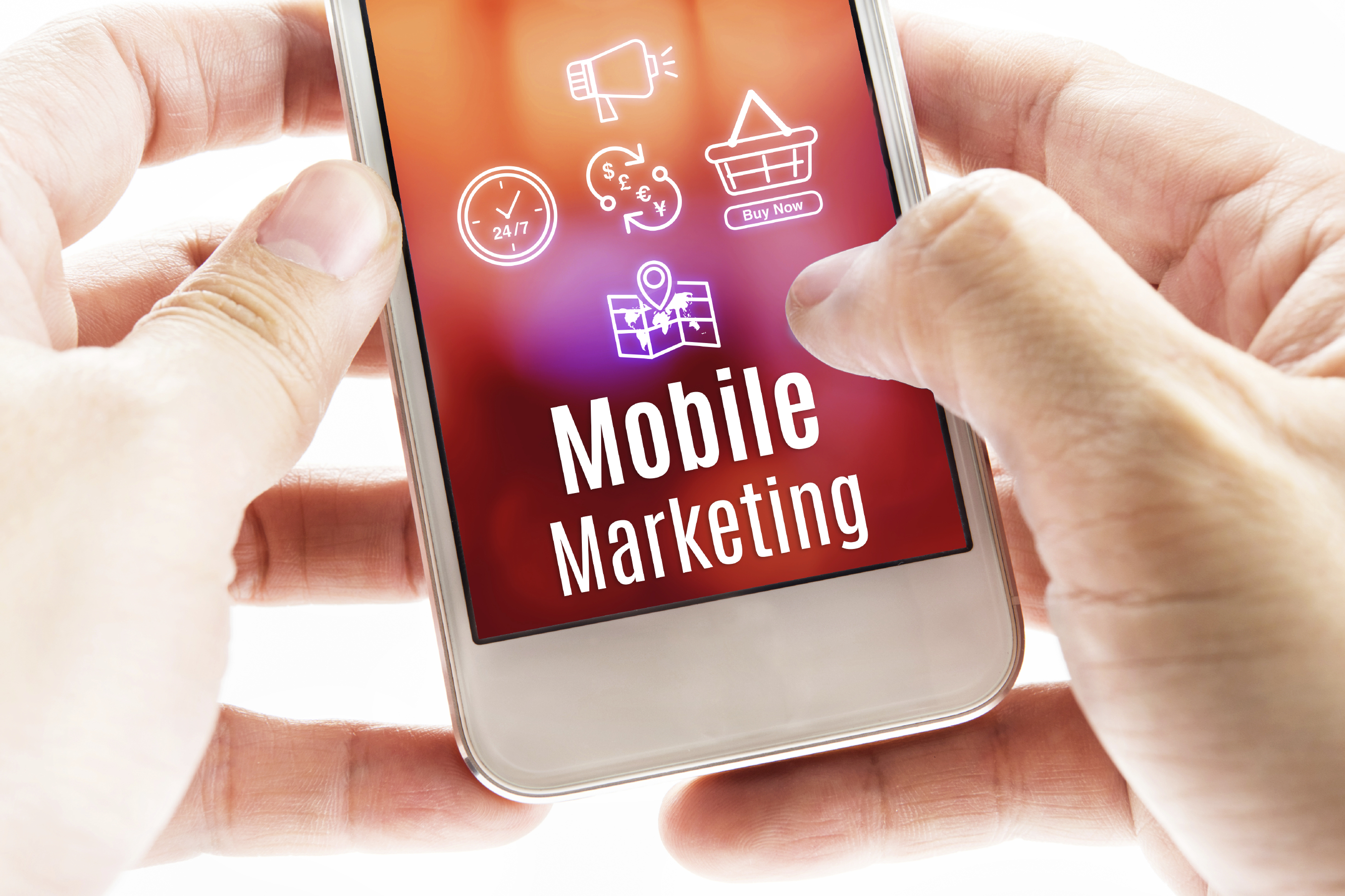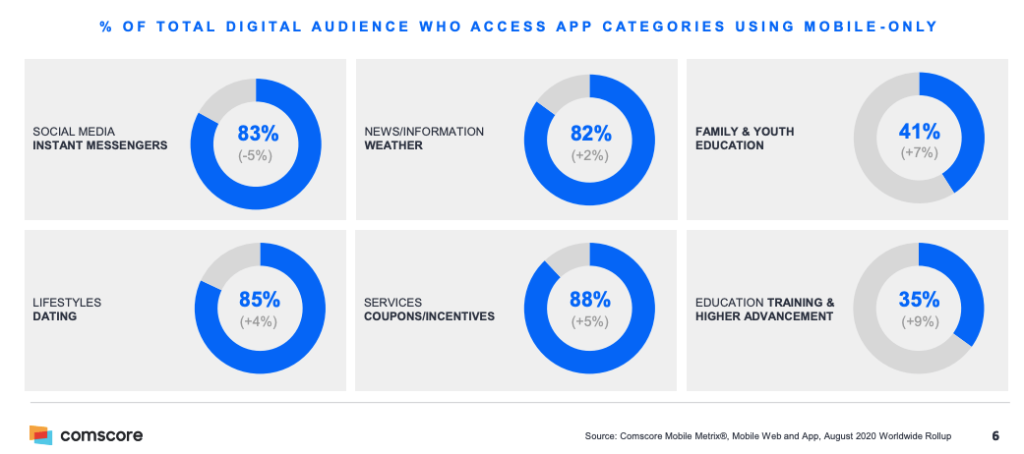
Mobile marketing refers to the process of engaging with consumers and promoting products, services, or brands through mobile devices like smartphones and tablets. It involves utilizing a range of strategies such as mobile advertising, app-based promotions, SMS marketing, and location-based targeting to reach and connect with customers who are on the go. The objective of mobile marketing is to leverage the widespread use and personal nature of mobile devices to deliver targeted messages, offers, and information that are relevant to individual preferences and needs. By doing so, businesses can effectively engage with customers in real-time while they are actively using their mobile devices.
What is Mobile Marketing?

Mobile marketing refers to the process of promoting products, services, or brands to consumers through mobile devices like smartphones and tablets. It involves utilizing various marketing strategies to engage and connect with customers on their mobile devices. These strategies may include mobile advertising, app-based promotions, SMS marketing, mobile search ads, and location-based targeting. The primary objective of mobile marketing is to reach customers in real-time and deliver personalized messages, offers, and information that cater to their individual preferences and needs. By leveraging the widespread use of mobile devices and the convenience they offer, businesses can effectively reach customers on the go and tap into the growing trend of mobile-centric lifestyles.
What are the Advantages of Mobile Marketing?

Mobile marketing offers numerous advantages for businesses seeking to connect with their target audience.
Here are some key benefits:
- Extensive Reach: Mobile devices are pervasive, with a large portion of the population owning smartphones or tablets. Mobile marketing allows businesses to tap into this widespread usage and reach a broad audience.
- Personalized Targeting: Mobile marketing enables businesses to deliver tailored messages, promotions, and content to individual users based on their preferences, behavior, and location. This personalized approach enhances the relevance and effectiveness of marketing efforts.
- Real-Time Engagement: Mobile devices provide instant connectivity, allowing businesses to engage with customers in real-time. Through push notifications, SMS marketing, or in-app interactions, businesses can deliver timely offers, updates, and alerts, fostering immediate customer engagement.
- Enhanced User Experience: Mobile marketing enables businesses to optimize the user experience for mobile users. This includes mobile-responsive websites, mobile apps, and streamlined mobile campaigns, ensuring a seamless and enjoyable experience for customers.
- Higher Response and Conversion Rates: Mobile marketing campaigns often generate higher response and conversion rates compared to traditional marketing methods. The ability to deliver targeted and personalized messages directly to mobile devices increases the likelihood of capturing customer attention and prompting immediate action.
- Location-Based Targeting: Mobile devices provide location data, allowing businesses to target customers based on their geographic location. This enables location-specific offers, promotions, or recommendations, delivering hyper-localized marketing messages to the right audience.
- Cost-Effectiveness: Mobile marketing can be cost-effective, particularly when compared to traditional advertising channels. With various mobile advertising platforms and tools available, businesses can optimize their campaigns to reach their target audience while managing costs efficiently.
- Measurable Results: Mobile marketing provides robust analytics and tracking capabilities, allowing businesses to measure and evaluate the success of their campaigns. Marketers can assess engagement levels, conversion rates, click-through rates, and other key metrics to gain insights into the effectiveness of their mobile marketing initiatives.
In summary, mobile marketing empowers businesses to connect with their target audience on a personal level, leveraging the widespread usage of mobile devices. With its ability to deliver timely, targeted, and personalized messages, mobile marketing can drive higher response rates, improve user experience, and ultimately contribute to business growth.
Types of strategies to take advantage of mobile marketing

There are many types of strategies to take the advantages of mobile marketing.
- Responsive Mobile Website: Develop a mobile-optimized website that adjusts seamlessly to different screen sizes and devices. Ensure fast loading times, easy navigation, and intuitive user experience to engage mobile visitors effectively.
- Mobile Apps: Create a dedicated mobile app for your business to provide a personalized and convenient experience for your customers. Offer features such as easy browsing, quick purchases, personalized recommendations, loyalty programs, and push notifications to enhance customer engagement.
- SMS Marketing: Utilize SMS (Short Message Service) to reach customers directly on their mobile devices. Send targeted and concise messages to provide time-sensitive offers, promotions, updates, or transactional notifications, fostering customer engagement.
- Mobile Advertising: Utilize mobile advertising platforms to display ads on mobile websites, apps, or within social media platforms. Leverage audience targeting options to reach specific demographics or interests and maximize the visibility of your brand and offerings.
- Location-Based Marketing: Utilize geolocation technology to deliver location-based offers, personalized recommendations, or notifications to users when they are in proximity to your business or specific areas of interest. This can be done through mobile apps, push notifications, or beacon technology.
- In-App Advertising: Advertise your products or services within popular mobile apps that align with your target audience. Take advantage of in-app ad formats such as banners, interstitials, or native ads to increase brand exposure and drive user engagement.
- QR Codes: Incorporate QR (Quick Response) codes into your marketing materials to enable easy access to offers, discounts, or additional information. Users can scan the codes with their mobile devices, providing a seamless and interactive experience.
- Mobile Payment Solutions: Implement mobile payment options such as digital wallets (e.g., Apple Pay, Google Pay) or mobile-optimized checkout processes to simplify and expedite the payment process for mobile customers, enhancing convenience and reducing friction.
- Mobile Social Media Marketing: Develop a strong presence on social media platforms, ensuring your content is optimized for mobile viewing. Engage with your audience through mobile-friendly posts, videos, live streaming, and interactive features to foster a sense of community and drive user participation.
- Mobile-exclusive Promotions: Create exclusive offers, discounts, or promotions specifically targeted at mobile users. This can include limited-time mobile-only deals or rewards for app downloads, encouraging customers to engage with your brand through their mobile devices.
Remember to align these strategies with your specific business objectives, target audience, and industry landscape. Continuously track and analyze the performance of your mobile marketing efforts to refine your approach and achieve optimal results.
Best practices for mobile marketing

Best practices for mobile marketing encompass a set of guidelines and strategies that businesses can follow to effectively engage with their target audience through mobile channels. These practices focus on optimizing the mobile experience, personalizing messaging, obtaining user consent, and leveraging mobile analytics to drive engagement and achieve positive results. By prioritizing mobile-friendly design, delivering personalized content, obtaining permission, and staying updated with mobile trends, businesses can enhance user experiences, maximize reach, and achieve their mobile marketing objectives.
- Prioritize Mobile Experience: Design all your marketing materials, websites, and campaigns with a focus on mobile devices. Ensure they are responsive, load quickly, and provide a seamless user experience across different screen sizes and operating systems.
- Know Your Audience: Gain a deep understanding of your target audience’s mobile behavior, preferences, and demographics. Use this knowledge to tailor your mobile marketing strategies to their specific needs, interests, and mobile usage patterns.
- Personalization is Key: Leverage customer data and analytics to personalize your mobile marketing messages and offers. Segment your audience and deliver targeted content, recommendations, and promotions based on their individual preferences, behaviors, and demographics.
- Obtain Permission: Practice permission-based marketing by obtaining explicit consent from users before engaging with them through mobile channels. Clearly communicate the value and benefits they will receive by opting in to receive mobile messages.
- Optimize for Mobile Search: Optimize your website and content for mobile search. Implement mobile SEO strategies, use mobile-friendly keywords, and ensure that your content is structured to appear prominently in mobile search results.
- Clear Call-to-Actions: Use concise and prominent call-to-action buttons or links in your mobile marketing materials. Make it easy for users to take the desired action, such as making a purchase, signing up, or downloading an app.
- User-Friendly Forms: If you require users to fill out forms, make sure they are mobile-friendly and easy to complete on smaller screens. Minimize the number of fields, utilize auto-fill options, and ensure that the form is simple to navigate and submit.
- Cross-Channel Integration: Integrate your mobile marketing efforts with other channels to create a seamless and consistent user experience. Align your messaging, branding, and promotions across mobile, web, social media, and other touchpoints.
- Test and Optimize: Continuously test and optimize your mobile marketing campaigns to improve their performance. Conduct A/B testing with different variations of messaging, visuals, and targeting to identify what resonates best with your audience.
- Utilize Mobile Analytics: Take advantage of mobile analytics tools to track and measure the performance of your mobile marketing initiatives. Monitor essential metrics such as app downloads, engagement rates, conversion rates, and user behavior to gain insights and make informed decisions.
- Stay Updated with Mobile Trends: Stay abreast of the latest mobile technologies, trends, and consumer behaviors. Embrace emerging technologies such as augmented reality, mobile video, or voice search to deliver innovative and engaging mobile experiences.
By implementing these best practices, businesses can optimize their mobile marketing efforts, enhance user engagement, and achieve favorable outcomes in reaching and connecting with their mobile-savvy audience.
Data demonstrating the potential of mobile marketing

Here are some knowledge about the potential of mobile marketing.
- Mobile Device Penetration: With over 6.4 billion smartphone users worldwide in 2021 and projected growth to 7.4 billion by 2023 (Statista), mobile devices have become pervasive, providing a vast audience for mobile marketing initiatives.
- Mobile Internet Usage: Mobile devices dominate global internet usage, accounting for over 55% of total internet usage in 2021 (StatCounter). This highlights the importance of optimizing marketing strategies for mobile channels to reach and engage a large online audience.
- Mobile Advertising Spending: Businesses recognize the potential of mobile marketing, as global mobile ad spending is estimated to reach $410.6 billion in 2022 (eMarketer). This substantial investment underscores the effectiveness of mobile advertising in reaching and influencing consumers.
- Mobile App Usage: Consumers spend an extensive amount of time on mobile apps, with over 3.5 trillion hours spent in 2020, and app downloads exceeding 218 billion (App Annie). This demonstrates the engagement potential of mobile apps as a marketing platform.
- Mobile Commerce: Mobile commerce has seen significant growth, with m-commerce sales accounting for 72.9% of global e-commerce sales in 2021 (eMarketer). This highlights the need for businesses to optimize their mobile marketing strategies to tap into the increasing trend of mobile shopping.
- Mobile Engagement and Conversion Rates: Mobile marketing campaigns often yield higher engagement and conversion rates compared to traditional marketing channels. For instance, mobile apps have been found to have three times higher conversion rates compared to mobile websites (Criteo).
- Push Notification Engagement: Push notifications, a key mobile marketing tool, can substantially increase app engagement, with studies showing an 88% boost in engagement rates (Localytics). Leveraging push notifications strategically can drive user retention, encourage desired actions, and foster customer loyalty.
- Location-Based Marketing: Location-based marketing, enabled by mobile devices, presents unique opportunities. Location-based ads have been found to prompt action from 84% of smartphone users (Google), demonstrating the power of targeted mobile marketing campaigns based on a user’s specific location.
These data points highlight the vast potential of mobile marketing in terms of audience reach, engagement, conversion rates, and the ability to leverage mobile-specific features like push notifications and location-based targeting. By understanding these opportunities and tailoring their strategies accordingly, businesses can harness the full potential of mobile marketing to connect with their target audience effectively.
Thanks,






Leave a Reply
You must be logged in to post a comment.